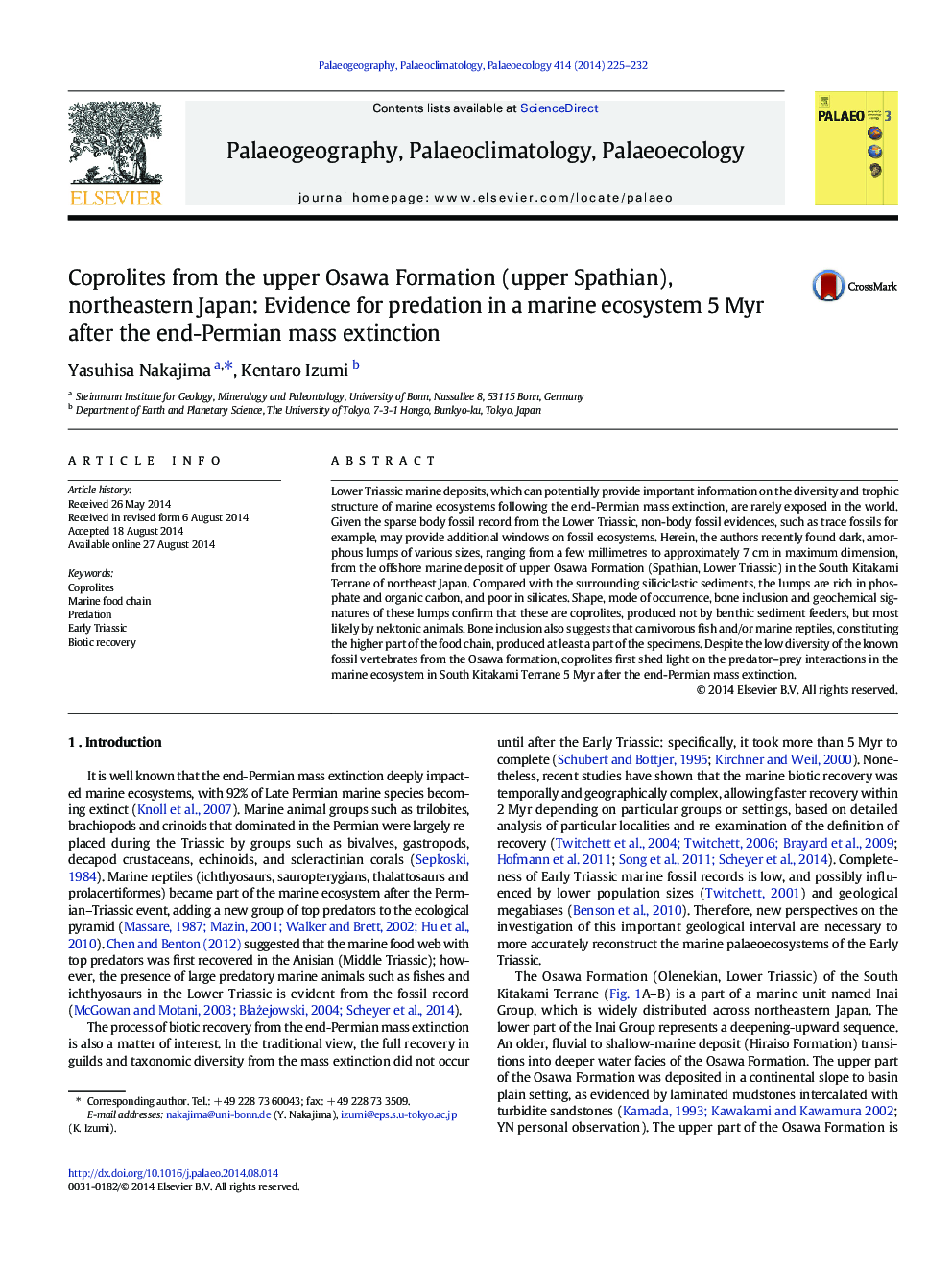| Article ID | Journal | Published Year | Pages | File Type |
|---|---|---|---|---|
| 6349963 | Palaeogeography, Palaeoclimatology, Palaeoecology | 2014 | 8 Pages |
â¢We identified coprolites from the Lower Triassic offshore sediments in Japan.â¢A bony inclusion suggests a predator-pray interaction between vertebrates.â¢The local food web was more complex than indicated by body fossil records.
Lower Triassic marine deposits, which can potentially provide important information on the diversity and trophic structure of marine ecosystems following the end-Permian mass extinction, are rarely exposed in the world. Given the sparse body fossil record from the Lower Triassic, non-body fossil evidences, such as trace fossils for example, may provide additional windows on fossil ecosystems. Herein, the authors recently found dark, amorphous lumps of various sizes, ranging from a few millimetres to approximately 7Â cm in maximum dimension, from the offshore marine deposit of upper Osawa Formation (Spathian, Lower Triassic) in the South Kitakami Terrane of northeast Japan. Compared with the surrounding siliciclastic sediments, the lumps are rich in phosphate and organic carbon, and poor in silicates. Shape, mode of occurrence, bone inclusion and geochemical signatures of these lumps confirm that these are coprolites, produced not by benthic sediment feeders, but most likely by nektonic animals. Bone inclusion also suggests that carnivorous fish and/or marine reptiles, constituting the higher part of the food chain, produced at least a part of the specimens. Despite the low diversity of the known fossil vertebrates from the Osawa formation, coprolites first shed light on the predator-prey interactions in the marine ecosystem in South Kitakami Terrane 5Â Myr after the end-Permian mass extinction.
